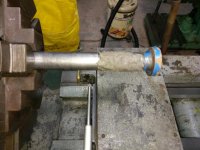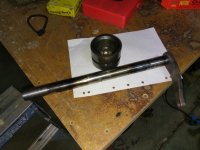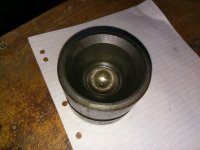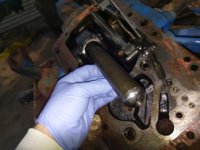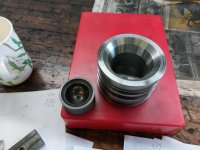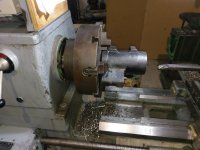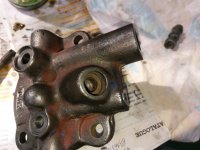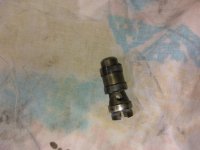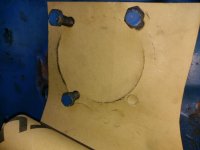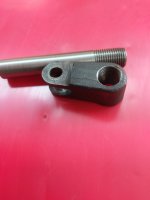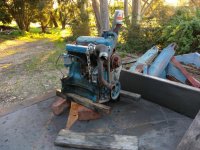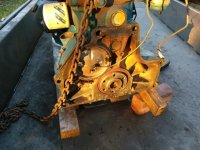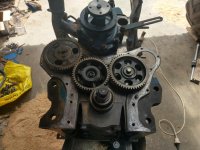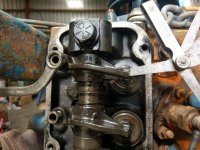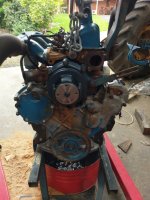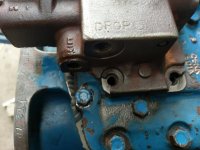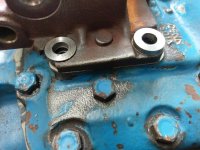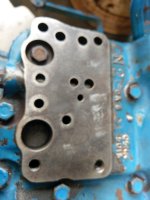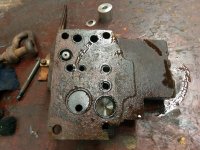Pete O
Silver Member
We've had this tractor for about 8 or 10 years, it's been very useful for general work around the property like carting firewood, moving dirt and mulch etc but it was in a pretty poor state when we bought it and it has only got worse. The clutch was slipping badly, there was oil leaking out of every possible place, the hydraulic system was functioning so poorly I couldn't grade my driveway with it (one of the key justifications for the tractor purchase in the first place) and the loader was struggling to lift much more than a house brick. Last year I ripped the loader bucket apart, stupidly using it to push out a small tree stump, and that was pretty much the straw that broke the camel's back; I had to decide whether to start fixing things or get rid of the tractor and find something better. The option of fixing things won the day as we decided that the tractor as it was would not sell for more than a few hundred dollars and we were looking at spending something in excess of $20k to replace it with something that would do what we wanted, whereas I figured if I spent something like 4-5k doing what this tractor needs done, I would have a good basic machine that was more than capable of meeting our needs. I have pretty good mechanical skills and a well-equipped workshop, although my experience of hydraulics is close to zero.
Four weeks ago I dismantled the loader from the tractor and then parked the tired old beast in the shed, drained all the oils and started dismantling it.
After removing everything that was in the way of splitting the tractor at the engine / gearbox interface, I spent a good while devising and fabricating a set of stands that would support the front end, allow it to be rolled forward and also provide for some tilt adjustment when it comes time to reassemble. I supported the bell housing on a trolley jack and the two halves came apart without much difficulty. Separating the gearbox from the rear axle was the next step, trolley jack moved to behind the gearbox rear flange and the floor crane used to lift the gearbox away. That gearbox is seriously heavy.
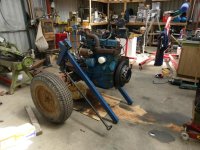

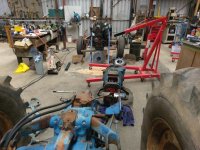
Four weeks ago I dismantled the loader from the tractor and then parked the tired old beast in the shed, drained all the oils and started dismantling it.
After removing everything that was in the way of splitting the tractor at the engine / gearbox interface, I spent a good while devising and fabricating a set of stands that would support the front end, allow it to be rolled forward and also provide for some tilt adjustment when it comes time to reassemble. I supported the bell housing on a trolley jack and the two halves came apart without much difficulty. Separating the gearbox from the rear axle was the next step, trolley jack moved to behind the gearbox rear flange and the floor crane used to lift the gearbox away. That gearbox is seriously heavy.





